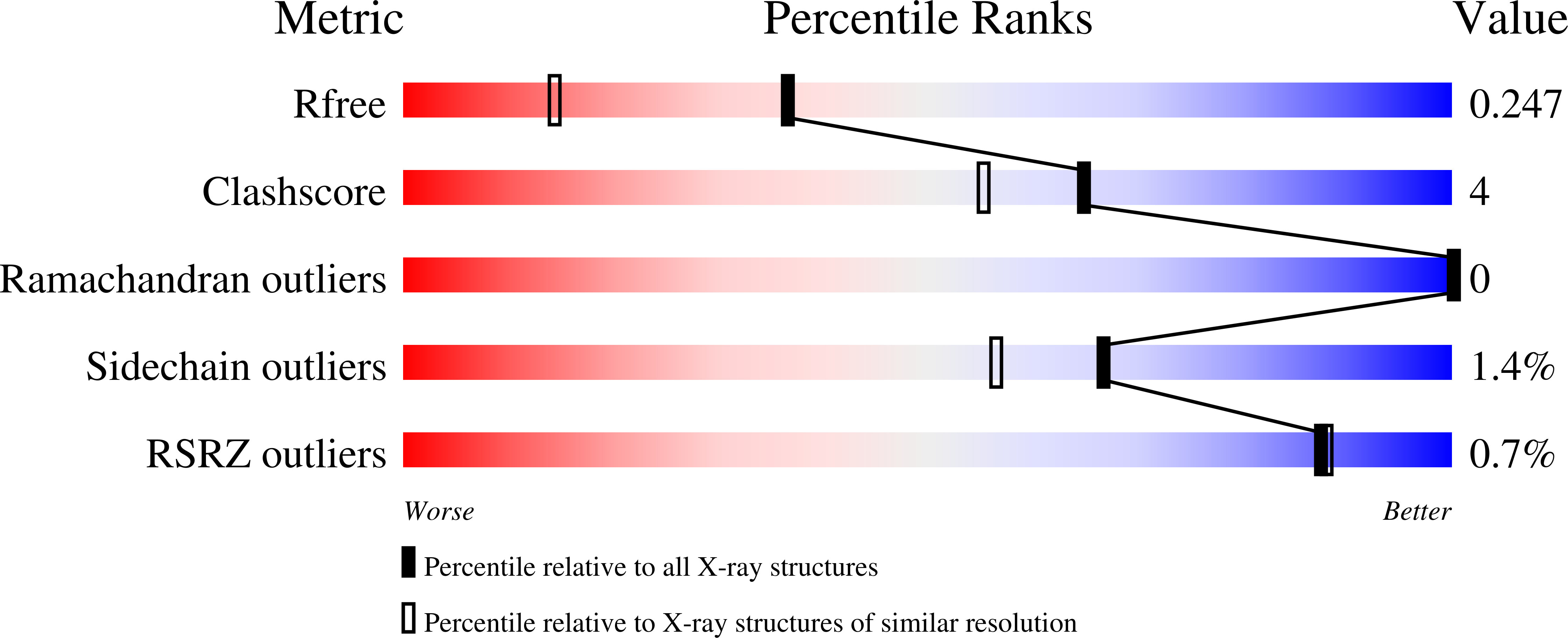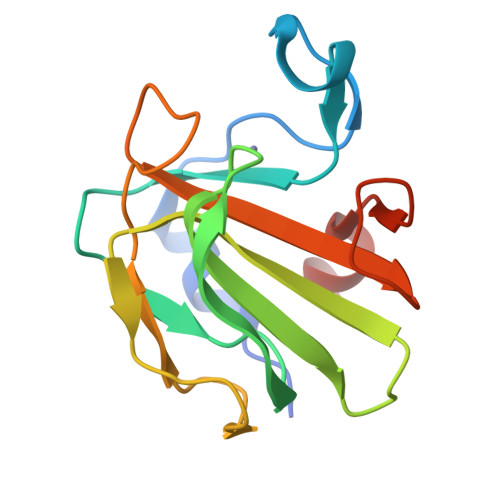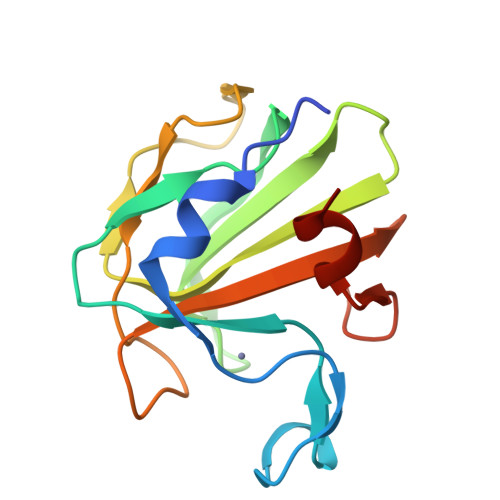Crystal structure of the antimicrobial peptidase lysostaphin from Staphylococcus simulans.
Sabala, I., Jagielska, E., Bardelang, P.T., Czapinska, H., Dahms, S.O., Sharpe, J.A., James, R., Than, M.E., Thomas, N.R., Bochtler, M.(2014) FEBS J 281: 4112-4122
- PubMed: 25039253
- DOI: https://doi.org/10.1111/febs.12929
- Primary Citation of Related Structures:
4LXC, 4QP5, 4QPB - PubMed Abstract:
Staphylococcus simulans biovar staphylolyticus lysostaphin efficiently cleaves Staphylococcus aureus cell walls. The protein is in late clinical trials as a topical anti-staphylococcal agent, and can be used to prevent staphylococcal growth on artificial surfaces. Moreover, the gene has been both stably engineered into and virally delivered to mice or livestock to obtain resistance against staphylococci. Here, we report the first crystal structure of mature lysostaphin and two structures of its isolated catalytic domain at 3.5, 1.78 and 1.26 Å resolution, respectively. The structure of the mature active enzyme confirms its expected organization into catalytic and cell-wall-targeting domains. It also indicates that the domains are mobile with respect to each other because of the presence of a highly flexible peptide linker. The high-resolution structures of the catalytic domain provide details of Zn(2+) coordination and may serve as a starting point for the engineering of lysostaphin variants with improved biotechnological characteristics. lysostaphin by x-ray crystallography (1, 2).
Organizational Affiliation:
International Institute of Molecular and Cell Biology, Warsaw, Poland.





















